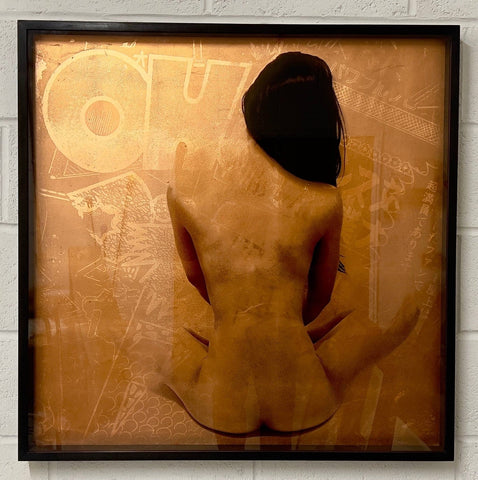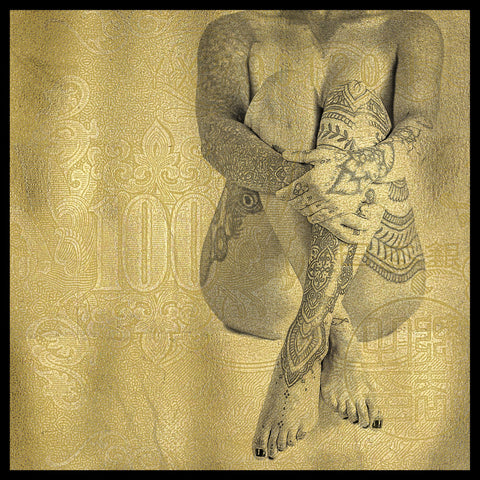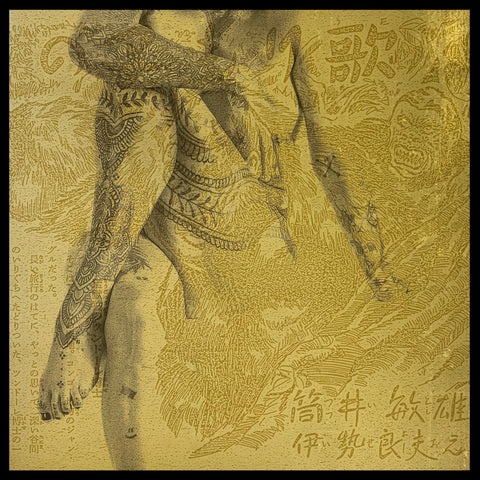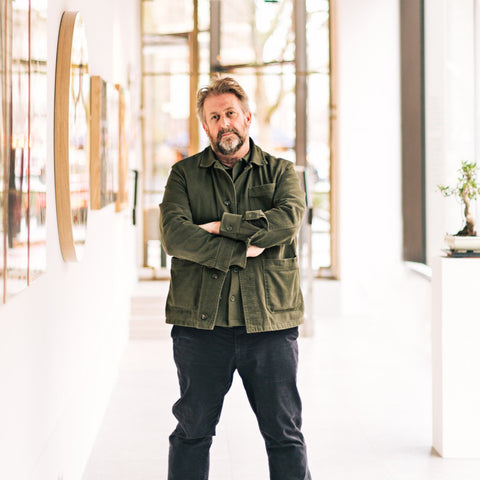We’re delighted to announce that a new series by Gavin Mitchell has arrived at Enter Gallery. Floating World is a collection of works inspired by Ukiyo-e or ‘Pictures of the Floating World’ - a genre of Japanese art which has influenced modern movements such as Animé and Manga.
With this new collection, Mitchell ushers in a new era, evolving the thinking behind his popular East Meets West series into a fresh and stylish collection.
In today’s blog, we’re chatting to Gavin to discover more about this new series of works, and to learn how Eastern philosophy influences both his art and his attitude towards creation.
Floating World
Whether it’s in his East Meets West collection, or his 2023 Fourth Wall series, Mitchell’s artistic style involves taking found images from Eastern and Western culture and combining them to create new worlds and narratives.
In this new series, Mitchell combines the beauty of the female form with contemporary materials sourced from vintage Japanese cartoons, currency and Manga comics.
Each artwork plays with layers, with Mitchell combining mixed media collage with photography directly onto acrylic. These layers create a multi-sensory experience, with the changing shadows each piece creates echoing the ideas of transience that are key to Ukiyo-e and to Wabi-Sabi - the Japanese art of Impermanence, a philosophy that is central to Mitchell’s work, and to this collection.

A Land of Contrasts
Mitchell’s innovative use of contrast in this Floating World series is just one example of how his entire oeuvre is inspired by Japanese culture and philosophy.
Mitchell’s work explores the complex layers that permeate Eastern and Western culture, including modern and traditional ideals and what we present openly versus what we tend to conceal. He explains:
“Eastern culture has fascinated me ever since I was an art student. Whether it’s the films of Kiyoshi Kurosawa or the magical realism of Haruki Murakami, Japanese culture is an endless contradiction, ethereal and deferential on the surface, but subversive and often hentai (perverted) beneath the surface. Real life in Japan is so controlled, so it makes sense that beneath that façade there’s lots of interesting stuff going on.”
In Japan, mark-making and ink on bodies is something that’s often associated with society’s underbelly. This is a notion that Mitchell explores via Manga and Blondie (both pictured above).
In the works, Mitchell’s Japanese model, Natsumi, has no body art. Instead, the patterns from Manga comics and ‘Blondie’ (an American comic strip from the 40s translated into Japanese) both come through, making the model appear as though she has those patterns on her body.
In contrast, in 100 Yen and Gorillas, Mitchell works with a new British model, Heloise, who has many tattoos. Mitchell explains:
“The patterns on 100 Yen notes resemble tattoos patterns. The image of Heloise printed onto the acrylic reflects onto the back of the piece, giving the effect of one solid image which combines her tattoos and the pattern from the 100 Yen note.”
Ikebana Influence
Besides the fascinating duality of Eastern and Western culture, another element that draws Mitchell to Japan is their beautiful philosophy on life, and how differently they approach creativity. He explains:
“They have such simple takes on life that make you think about things from another angle. They are small ideas, but they can really change how you think.”
One such idea is the Japanese flower arranging tradition of Ikebana. Those doing the arranging don’t look at the space where the flower is. Instead they look at the empty space that surrounds it.
It’s this idea of keeping space and letting things through it that has provided further inspiration for Mitchell’s latest works…
“Ikebana is where I got the idea to use space a little differently, thinking about how the background and the acrylics interact with each other. In the pieces, I have bleached out the bodies to allow the patterns from the collage to come through. It’s interesting to think about space and how you can use it in interesting ways to get a more unusual result.”
“In Goldie and Manga, the body is almost imperceptible. I white out the body, leaving the mind to make up the body’s shape. The lines are just about there but her waist doesn’t exist – your mind invents it because the shapes you can see suggest those you can’t.”
We were interested to discover how Japan's philosophies have impacted Mitchell’s approach to making his art. One school of thought that has played a significant role is Wabi-Sabi - the Japanese art of impermanence.
“Wabi-Sabi states that nothing is permanent, everything is imperfect and transient. You let things be what that will be. In the west, we want to control everything, even beauty. We’re always trying to define and create an image of what we think encapsulates perfection – in the east, that doesn’t exist.”
“I always try to flow with these Wabi-Sabi ideas of impermanence and humility. I try to act on impulse and follow the inspiration when it comes. It’s taught me the importance of keeping things moving, of not being afraid to keep things open or to ditch things that aren’t working. Most of my ideas have been very serendipitous and I like being open to that.”
Gavin Mitchell’s Floating World series is available at Enter Gallery now. Explore the collection







